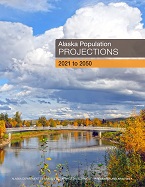Using Projection Data
Introduction
Occupational estimates and projections for Alaska are developed every other year. Projections, which currently cover the 2018-2028 period, are widely used for planning and preparation of educational and training programs, developing career information and studying long-range trends in occupational employment. The projections process consists of four principal phases:
- Read more about Using Projection Data
- Log in to post comments

